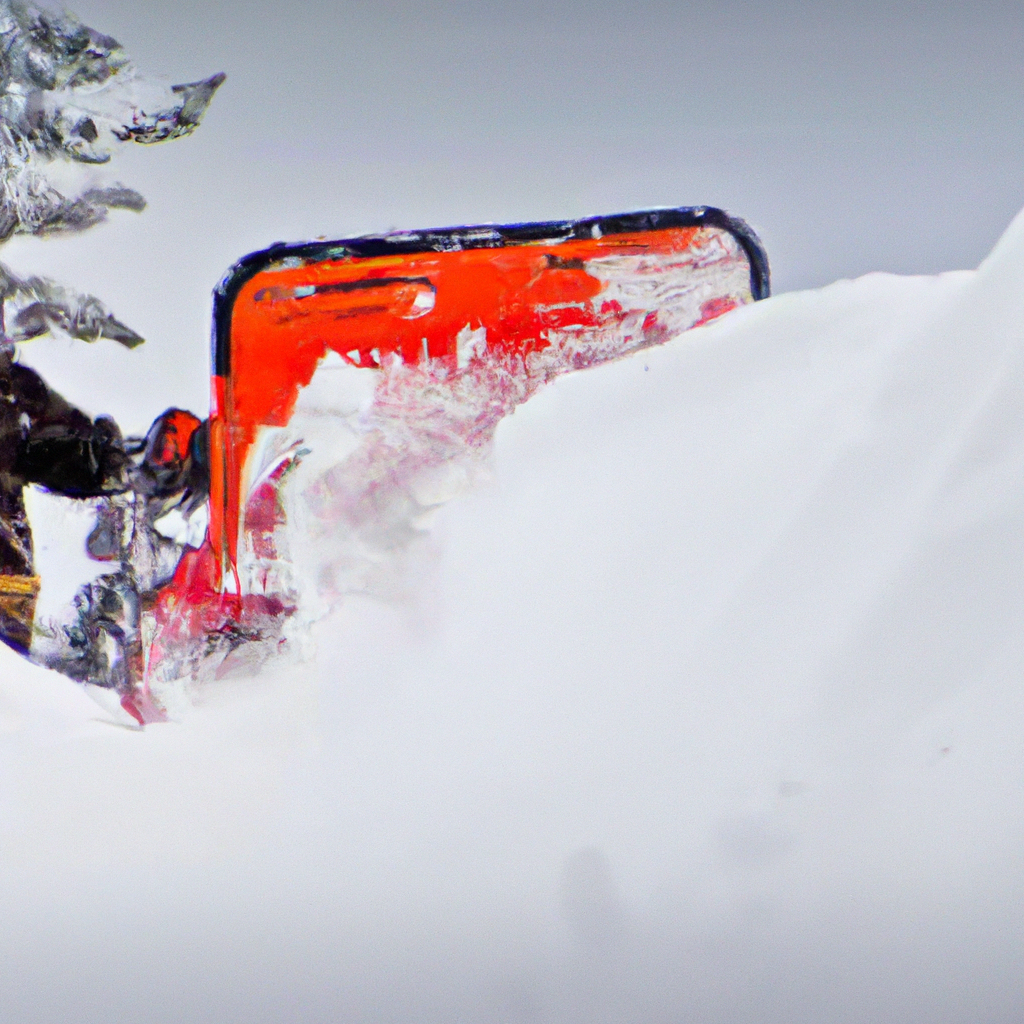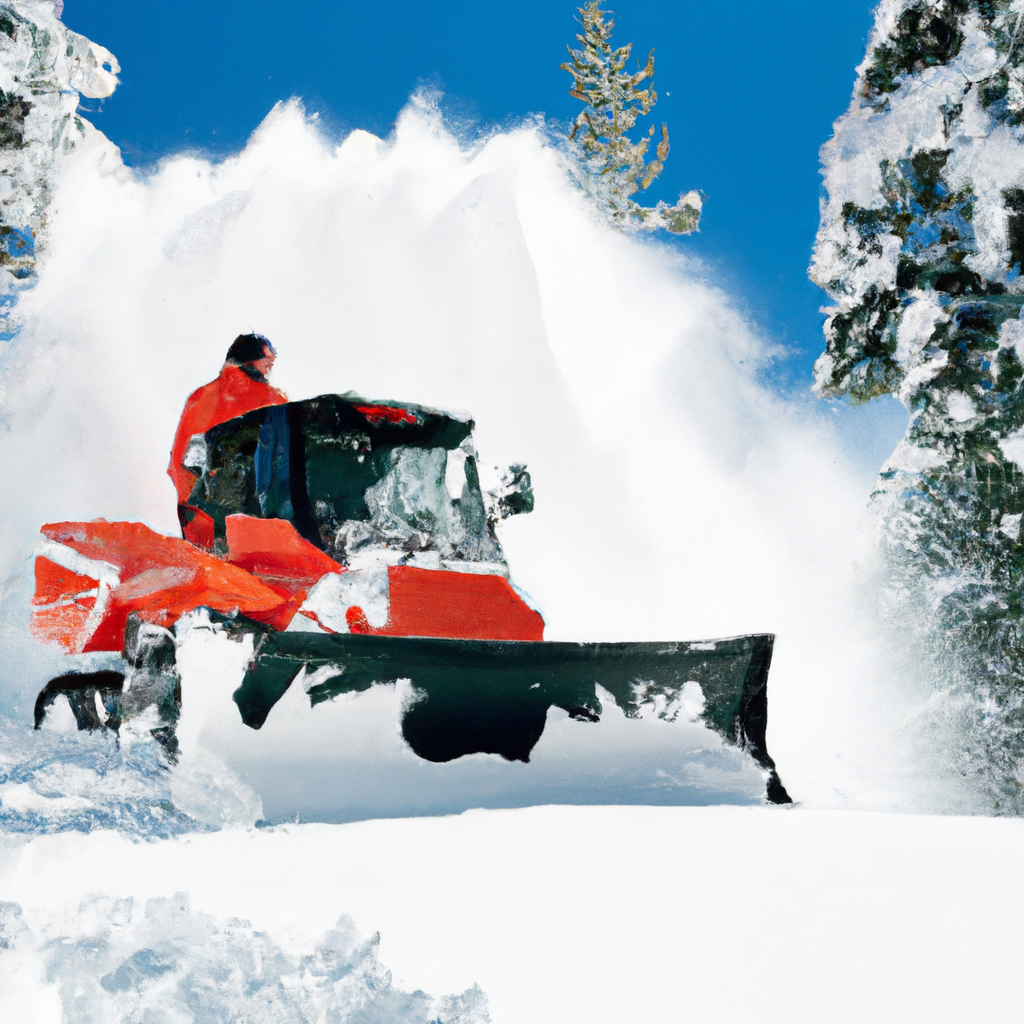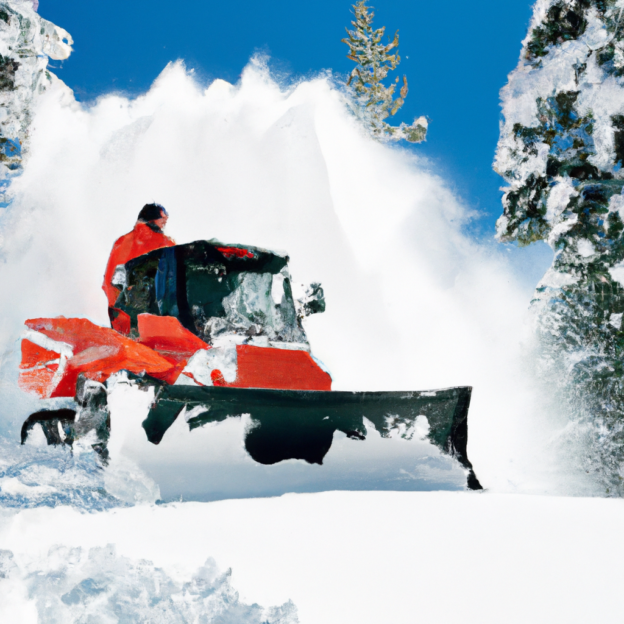When it comes to clearing snow with a snowblower, it’s important to know if there is a maximum slope or incline that is recommended for safe and effective use. After all, the last thing you want is to take your snowblower up a steep slope, only to lose control and risk damage to yourself or your equipment. In this article, we will explore whether there is a maximum slope or incline that is recommended for snowblower use and provide some insights to help you navigate your snowy terrain with confidence.

Factors to Consider
When it comes to using a snowblower on a slope, there are several important factors to consider to ensure that you are able to operate the machine safely and effectively. These factors include the terrain, snow conditions, and the type of snowblower you are using.
Terrain
The terrain of your slope is a crucial factor to take into account before using a snowblower. Steep slopes can pose challenges and increase the risk of accidents. It’s important to assess the angle and condition of the slope to determine if it is suitable for snowblowing. If the slope is too steep or uneven, it may be safer to consider alternative snow removal methods.
Snow Conditions
The condition of the snow on your slope is another vital consideration. Wet and heavy snow can make the slope more slippery and difficult to navigate with a snowblower. Additionally, if the snow has frozen or formed ice, it can increase the risk of losing control while operating the machine. Understanding the type of snow you are dealing with will help you prepare and adapt your snowblowing technique accordingly.
Snowblower Type
Different snowblower types have varying capabilities when it comes to handling slopes. Single-stage snowblowers are generally not recommended for use on steep slopes, as they lack the necessary power and traction. Two-stage or three-stage snowblowers are better equipped to handle slopes due to their auger and impeller systems, which provide greater throwing distance and traction. It’s essential to choose a snowblower that is specifically designed for sloped terrain to ensure safe and efficient operation.
Understanding the Slope or Incline
Before venturing out with your snowblower on a slope, it’s important to have a clear understanding of what constitutes a slope or incline and how to measure it accurately. This knowledge will help you make informed decisions about the suitability of a slope for snowblower use.
Definition
A slope or incline refers to a surface that deviates from being completely flat. In the context of snowblower use, it typically involves a gradual or steep upward or downward angle. It’s important to note that even a seemingly mild slope can present challenges for snowblowing, depending on other factors such as snow conditions and the operator’s experience.
Measurement Methods
To accurately measure the slope or incline of your terrain, a variety of tools and methods can be utilized. Some common options include using a digital or analog inclinometer, a smartphone app with inclinometer functionality, or manual measurements using a level and ruler. Whichever method you prefer, it’s essential to ensure accurate measurements before determining the suitability of a slope for snowblowing.

Potential Risks and Dangers
While snowblowers can be highly effective tools for snow removal, using them on slopes poses certain risks and dangers. Being aware of these potential hazards will help you take appropriate precautions and minimize the likelihood of accidents or damage.
Tipping over
One of the significant risks associated with snowblowing on slopes is the potential for the machine to tip over. The combination of a sloped surface, uneven terrain, and the weight of the snowblower can make it prone to tipping. This can not only damage the equipment but also pose a risk to the operator if they are caught underneath. Understanding the limitations of your snowblower and exercising caution when maneuvering on a slope can help prevent tipping incidents.
Losing control
Operating a snowblower on a slope requires skill and control. The risk of losing control increases when facing steep slopes or challenging snow conditions. Losing control can lead to accidents, including being pulled down the slope, colliding with obstacles, or even injuring oneself. It is crucial to maintain a steady and focused approach, adjusting the speed and direction of the snowblower as needed to maintain control on the slope.
Snowblower damage
Using a snowblower on a slope can put additional strain and stress on the machine. The weight of the snow, the angle of the slope, and potential encounters with debris can all contribute to the risk of damaging the snowblower. It’s important to consider the durability and capabilities of your snowblower model and avoid pushing it beyond its limits on challenging slopes.
Personal safety
Lastly, personal safety should always be a top priority when using a snowblower on slopes. Falling, slipping, or getting entangled in moving parts can cause severe injuries. Wearing appropriate safety gear, such as sturdy footwear, goggles, and gloves, can help protect you from potential hazards. It is also important to avoid operating the snowblower while fatigued or in unfavorable weather conditions, as these factors can compromise your ability to navigate the slope safely.
Manufacturer Recommendations
Manufacturers of snowblowers typically provide detailed instructions and guidelines for safe use, including specific recommendations related to slopes and inclines. These recommendations should be consulted thoroughly to ensure that you are following the manufacturer’s intended usage and adhering to safety standards.
Consulting the manual
The snowblower manual is an essential resource for understanding the capabilities and limitations of your machine. It will often include information regarding recommended maximum slopes or inclines for safe operation. The manual may also provide additional tips and insights tailored to the specific model you own. Familiarizing yourself with this information will help you use the snowblower safely and effectively.
Safety guidelines
In addition to slope recommendations, the manufacturer’s manual will likely feature a section devoted to general safety guidelines. These guidelines cover various aspects of snowblower operation, including best practices for using the machine on slopes. It is crucial to read and adhere to these guidelines to minimize the risk of accidents or damage.
Common Slope Limits for Snowblower Use
While specific slope limits may vary depending on the manufacturer and model, there are some general guidelines that can help you determine if your slope is suitable for snowblowing. These slope limits are typically categorized based on the type of snowblower—residential-use or professional-grade.
Residential-use snowblowers
Residential-use snowblowers are typically designed for lighter snow removal tasks and may have limitations on the maximum slope they can handle. In general, slopes with angles of more than 15-20 degrees are considered steep and may exceed the capabilities of residential-use snowblowers. It’s important to consult the manufacturer’s recommendations to determine the specific slope limits for your machine.
Professional-grade snowblowers
Professional-grade snowblowers are designed to handle more demanding snow removal tasks and are generally equipped to handle steeper slopes. These models often have enhanced features such as more powerful engines, wider augers, and improved traction. While they can handle slopes greater than those recommended for residential-use snowblowers, it is still vital to review the manufacturer’s guidelines to ensure safe operation.
Tips for Safe Snowblowing on Slopes
If you have determined that your slope is suitable for snowblower use and you are comfortable operating the machine, there are several tips that can help you ensure a safe and effective snow removal experience.
Clearing the path
Before starting the snowblower, it’s crucial to clear the path of any obstacles or debris that could pose a risk during operation. This includes rocks, tree branches, and any other objects that could get caught in the snowblower or cause it to lose control. Ensuring a clear and obstacle-free path will help prevent accidents and damage to the machine.
Taking it slow and steady
When operating a snowblower on a slope, it’s important to maintain a controlled and steady pace. Avoid sudden acceleration or deceleration, as these can lead to loss of control. Gradually move the snowblower up or down the slope, taking care to adjust the speed and direction as needed to maintain stability. Taking it slow and steady will help you maintain control and reduce the risk of accidents.
Wearing appropriate gear
Personal protective gear is a crucial aspect of safe snowblowing on slopes. Ensure that you are dressed appropriately for the weather conditions, wearing warm clothing that allows for freedom of movement. Sturdy footwear with good traction is essential for maintaining a firm grip on the slope. Additionally, wearing goggles or safety glasses will protect your eyes from flying debris, and gloves will provide added grip and protection.
Alternative Options
If you find that using a snowblower on your slope is not feasible or safe, there are alternative options you can consider for snow removal.
Hand shoveling
Hand shoveling can be an effective and safe method for removing snow on slopes. While it may require more physical effort and time compared to using a snowblower, it provides greater control and reduces the risk of accidents. Choose a sturdy shovel and be mindful of your body mechanics to avoid strain or injury while shoveling on slopes.
Contracting a professional
If the slope is particularly challenging or you prefer to leave snow removal to the experts, contracting a professional snow removal service is a viable option. Professional snow removal companies have the necessary experience, equipment, and expertise to safely and efficiently clear snow on slopes. They can ensure that the snow is removed without causing damage and without putting you or your property at risk.
Using a snow plow attachment
If you own a vehicle with a plow attachment or have access to one, it can be an effective alternative for snow removal on slopes. Plow attachments are specifically designed for clearing snow and are typically more robust than residential-use snowblowers. However, operating a plow attachment still requires caution and skill, so be sure to assess your ability and comfort level before attempting this method.
Conclusion
Snowblowing on slopes can be a challenging task that requires careful consideration of various factors. By assessing the terrain, snow conditions, and choosing the right snowblower type, you can increase the chances of successful and safe snow removal. It is crucial to understand the potential risks and dangers associated with snowblowing on slopes, as well as following the manufacturer’s recommendations and guidelines for safe operation. If your slope exceeds the safe limits or you prefer alternative options, hand shoveling, contracting a professional, or using a snow plow attachment are viable solutions. Remember to prioritize personal safety, take necessary precautions, and use the appropriate gear when operating a snowblower on slopes. With proper planning and careful execution, you can safely and effectively remove snow, ensuring a clear and safe pathway for yourself and others.
